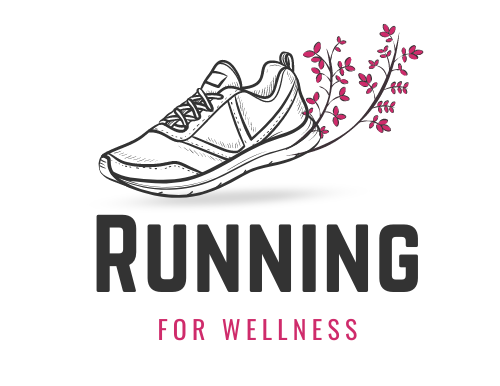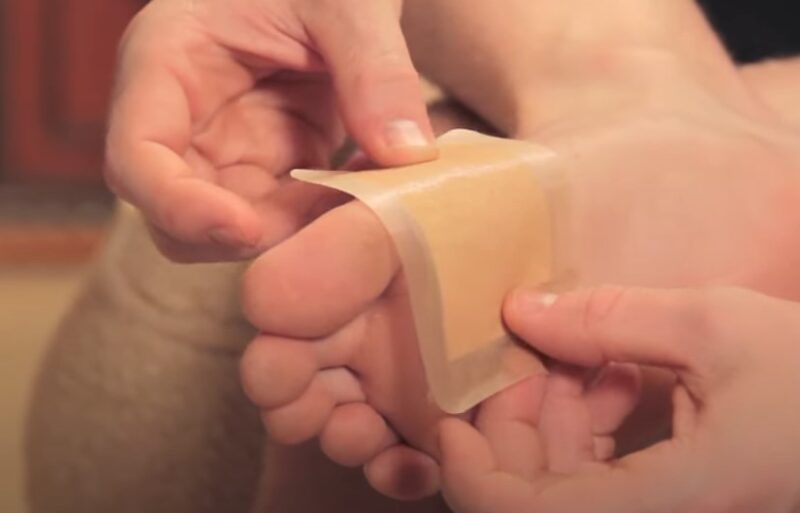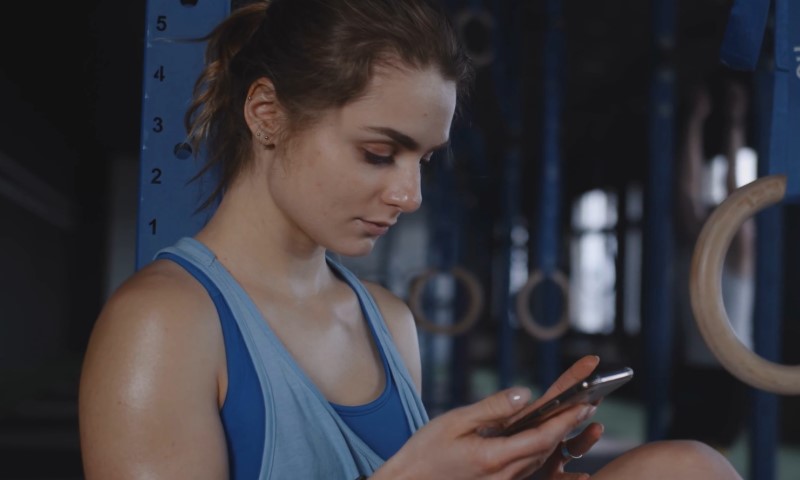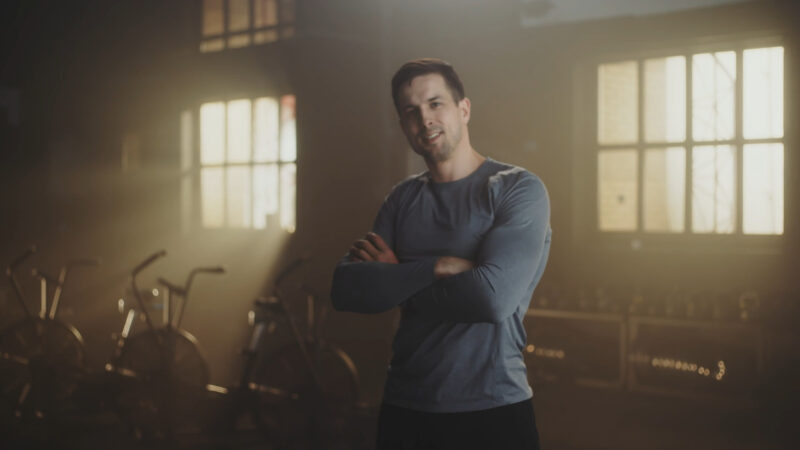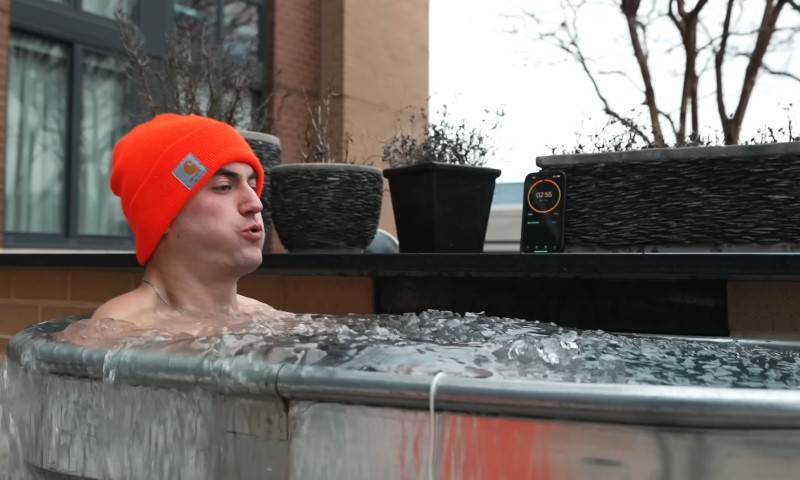Your feet are your foundation, especially when you run. If you’re chasing a marathon PR, grinding through trail miles, or just getting started with a local 5K, it only takes one bad blister or an annoying cut to throw everything off. The sting, the limp, the distraction. It’s just very disruptive.
Let’s walk through exactly why foot blisters and cuts happen during running, how you can prevent them, and what to do when they show up anyway.
Table of Contents
ToggleBlisters
Blisters aren’t just about friction. They’re about shear. That’s the technical term for the force that pulls your skin layers in different directions while your foot moves inside your shoe.
Every step rubs and shifts the skin against your sock, the sock against your shoe, and the layers of your skin against each other. Eventually, the upper layer tears slightly and fills with serum, a clear fluid that builds up under the skin.
Should foot issues spiral beyond blisters, especially post-medical care, you may benefit from Scranton malpractice legal support.
You typically don’t feel a blister forming in the moment. It takes around two hours of repeated stress for it to fully form. And once it does, it can take you from cruising to wincing pretty quickly.
Factors That Make It Worse
- Friction and Shear Forces: High-pressure areas like the heel, ball of foot, or toes see the most action.
- Heat: A 4°C rise in skin temperature can make your skin more prone to blistering. That increase in heat weakens the connection between skin layers.
- Moisture: Sweat, rain, river crossings—all of it softens your skin, which means more friction and more risk.
- Swelling from Dehydration or Low Sodium: When your feet swell, your skin gets stretched and stressed. That loosens the bond between skin layers, increasing the odds of a blister forming.
Cuts
Cuts don’t get as much attention as blisters, but they can be just as frustrating, especially if they get infected or throw off your gait.
They usually come from:
- Sharp Seams or Poor Shoe Construction: That little ridge in your shoe lining? It can dig in and slice the skin after enough miles.
- Trapped Debris: Tiny rocks or grains of sand can wreak havoc if they get lodged inside your shoe or sock.
- Long Toenails: They can jab into adjacent toes and leave little cuts that burn with every step.
Even a small cut between toes can mess with your mechanics. And if you’re on your feet for hours at a time, one wrong edge can open skin before you realize it’s happening.
How to Prevent Foot Blisters and Cuts
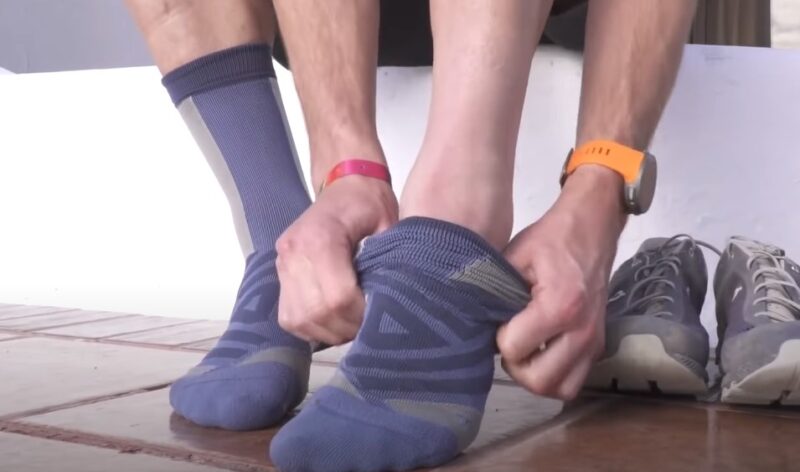
The best strategy is prevention. A solid routine, the right gear, and a bit of daily attention can save you hours of painful recovery.
Gradual Training
Your skin needs time to adapt to stress, just like your muscles do. Increase mileage slowly to allow natural thickening of the skin.
But don’t let calluses grow unchecked; thick ones can trap moisture and blister underneath.
Tip: Use a pumice stone or foot file every few days to keep calluses at a safe level. You want them there, just not too thick.
Get Serious About Footwear and Socks
Shoes and socks are your first line of defense. Get them wrong, and no amount of taping or lubricating will help.
Shoes
- Get professionally fitted at a running store.
- Check that you have enough toe room, proper width, and a snug heel fit.
- Break in new shoes gradually.
- Rotate two different pairs to reduce pressure points.
Socks
Your socks can make or break your run.
| Sock Brand | Material | Key Benefit | Notes |
| Injinji Run Lightweight | Synthetic | Separates toes, reduces friction | May feel unusual at first |
| Balega Blister Resist | Mohair blend | Cushioned, secure fit | Great for long runs |
| Bombas Merino Wool | Merino blend | Breathable and comfy | Warm in winter, soft feel |
Toe socks are especially useful if you get blisters between your toes. They limit skin-on-skin friction and keep everything separated.
Manage Moisture Like a Pro
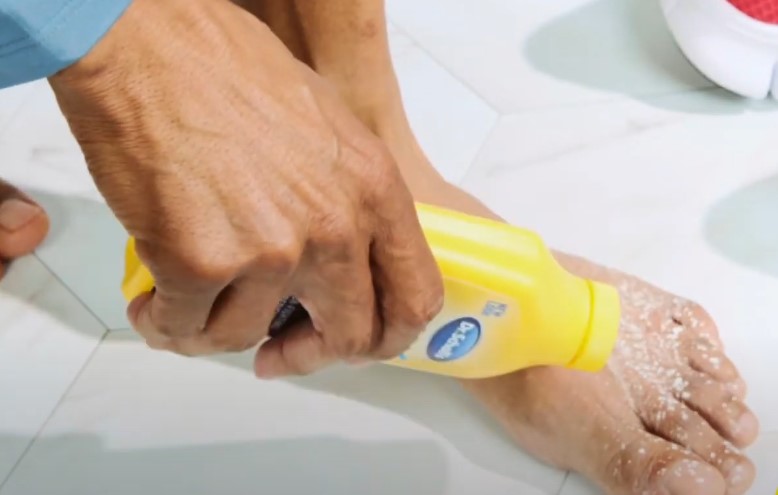
Dry feet = less friction. That’s the equation to remember.
Try these:
- Use foot powder or antiperspirant on your feet before runs. Stick with one that includes an emollient to avoid overly dry or cracked skin.
- Practice in wet conditions if you’re training for a race with creek crossings or likely rain.
- Change socks mid-run for long efforts or stage races.
Add a Friction Barrier
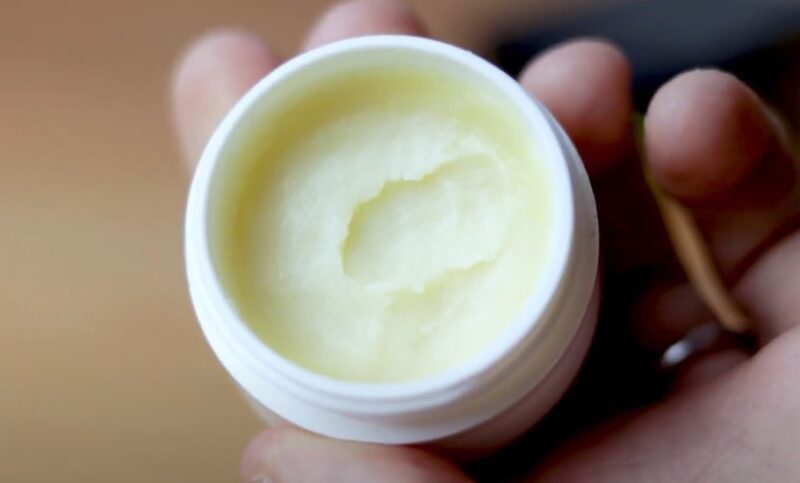
Lubricants and tapes give your feet an extra layer of defense.
Top Picks
- Body Glide Foot Glide: Simple, effective, and mess-free.
- Megababe Thigh Rescue: Yes, it’s marketed for thighs, but it works great on feet too.
- Squirrel’s Nut Butter: Popular with trail runners and ultra-distance athletes.
For tape:
- Engo Patches stick inside your shoe, not on your skin, and last longer than you’d expect.
- Leukotape or Kinesio Tape can hold up even when soaked with sweat.
- Moleskin is a classic. Just cut to fit and stick it where you need it.
If your pinky toe’s the problem, try BlisterPod Gel Toe Caps – they cushion and protect without rubbing.
Check Your Feet Daily
Small issues grow fast. A red spot can turn into a painful blister in an hour if ignored.
- Look for hot spots or irritated areas
- Apply lubricant, moleskin, or tape pre-run
- Use past experiences to spot trends (e.g., if your heel always acts up after mile 10, prep it before mile 1)
Race Day Game Plan
- Run in your race-day socks and shoes ahead of time
- Pack a mini kit: tape, lube, bandages, scissors
- Rehearse “worst case” situations like running with wet feet or taping mid-run
How to Treat Foot Blisters and Cuts
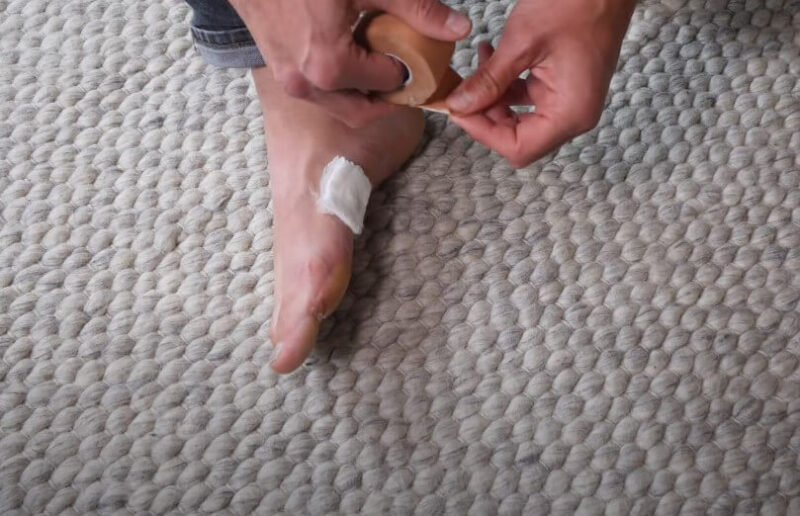
Sometimes, prevention isn’t enough. Maybe you pushed past hot spots. Maybe the trail had a surprise. Either way, it helps to know what to do when your feet go south.
Blister Treatment In the Middle of a Run
Here’s a solid 9-step fix if you’re already in motion:
- Clean with alcohol pad or water
- Sterilize and pop with a needle if needed (just 2–4 holes, gently squeeze fluid)
- Keep the skin intact, don’t tear the roof off
- Dry the area
- Apply lubricant if you have it
- Cover with bandage, tape, or moleskin
- Use tincture of benzoin for better tape grip
- Smooth the tape carefully, no folds or bumps
- Get back on the trail and monitor as you go
Products That Hold Up Mid-Run
| Product | Type | Why It Works |
| KT Tape Performance+ | Patch | Long-lasting, good for sweaty conditions |
| Compeed Blister Strips | Patch | Cushioned, sticky, good for toes |
| Band-Aid Hydro Seal | Bandage | Seals out dirt, stays put |
Healing at Home After the Run
- If the blister is intact, leave it alone. Let it dry and peel naturally.
- If it’s torn, clean it with antiseptic and apply a moist-healing dressing like:
- Compeed Hydrocolloid Plasters
- Spenco 2nd Skin Cushions
Change dressings daily. Watch for infection – redness, swelling, or pus is your cue to call a doctor.
Treating Cuts
Cuts are easier to clean, but can still become infected fast.
Steps:
- Rinse with soap and water or antiseptic wipe
- Cover with waterproof bandage (like Band-Aid Hydro Seal)
- Change daily and watch for signs of trouble
Pack Your Kit Right
Whether you’re trail running or road racing, a compact blister and cut kit is worth its weight.
What to include:
- Leukotape or Kinesio Tape
- Sterile needles or a size 11 scalpel
- Alcohol pads
- Body Glide or similar lube
- Moleskin or felt
- Compeed dressings
- Tincture of benzoin
- Gauze pads
- Blister-specific bandages
- Scissors
Tip: Print a checklist from CTS and keep it in your gear bag.
A Few More Things to Watch
Athlete’s Foot
If blisters show up between your toes, fungus could be part of the problem. Try antifungal creams or diluted vinegar soaks for a few weeks and see if it clears up.
Should You Pop a Blister?
Some runners swear by draining; others say leave it alone. The key is cleanliness. If it’s big and painful, drain it safely with sterile tools. If it’s small and manageable, let it be.
Consider a Gait Analysis
Sometimes, blisters and cuts aren’t about shoes or socks – they’re about how you move. A 3D gait analysis can spot pressure points or awkward movements that make your feet vulnerable. Many specialty clinics offer this service and can help fine-tune your shoe choice, too.
Final Tips for Runners
- Start checking your feet now, not after race day
- Keep a log of problem spots
- Tape early, not after the pain starts
- Don’t ignore a hot spot or a small cut
- Ask a pro if blisters or cuts keep showing up in the same spot
Your feet work hard. They deserve smart care. Blisters and cuts are preventable and manageable. A little prep and awareness go a long way.
Related Posts:
- Top 400 Hilarious Gym Quotes to Keep You Motivated
- How Long Does It Take to Train for a Half Marathon?
- 25 Simple Running Motivation Tips To Get You Moving
- Half Marathon Training Plan for Beginners - Simple…
- How Far Is a Half Marathon? Everything You Need to Know
- How Can You Start a Career as a Running Coach?
